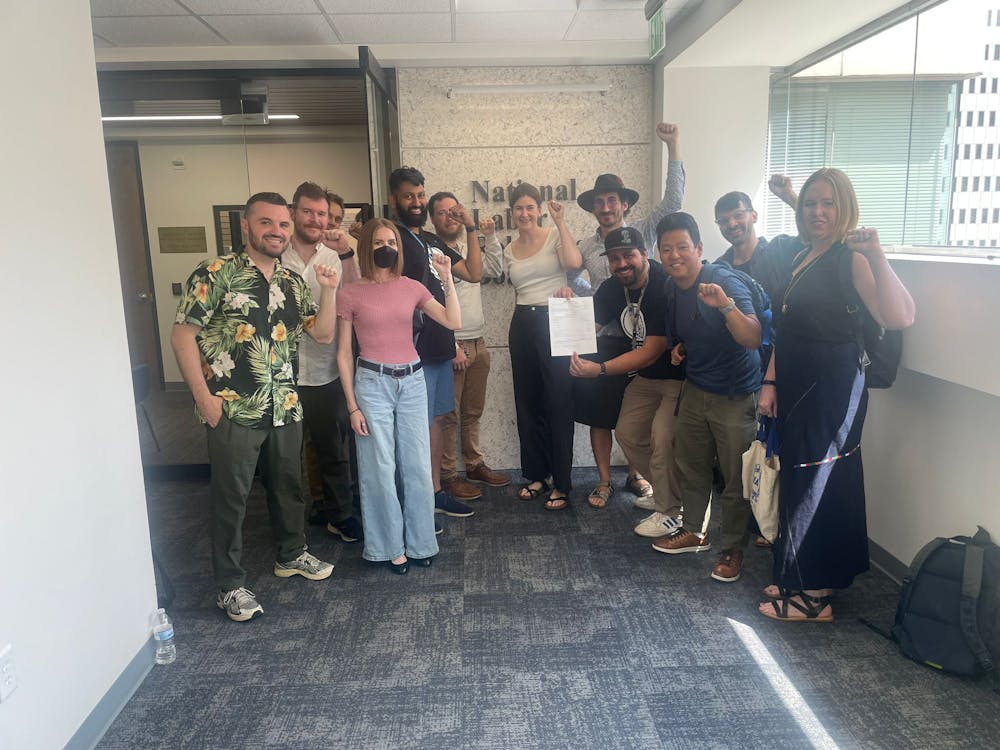Rebecca Goldstein, a representative from the Washington, D.C.-based nonprofit Men Can Stop Rape, led a discussion about what men can do to combat rape culture.
The event, “Rape as a Men’s Issue,” took place on Thursday, April 13. It was part of The Masculinity Project, which is a collaboration between the Offices of Gender Equity and LGBTQ Life.
Director of the Office of Gender Equity Jeannine Heynes said that discussions about sexual assault often focus on ways that women can protect themselves. Because of this, men may be discouraged from entering the conversation.
“It’s not very masculine to talk about masculinity,” Heynes said. “I think there are so many things in our culture that say ‘It’s just easier for you, men, to not be part of this conversation.’”
In her discussion, Goldstein explored the way men are stereotyped by studying surveys of the past 20 years.
She found that when people think of ‘real men,’ the characteristics that come to mind are still vastly different from the traits that people think of for ‘strong men.’
She explained that ‘real men’ are generally viewed as handsome, unemotional and self reliant, whereas ‘strong men’ are seen as considerate or generous.
Goldstein explained that there are men who do not fit into the typical definition of masculinity.
“There are people out there who don’t need to follow this common dominant narrative and story and are able to push past it,” she said. “This counter-story explores just how many different kinds of people there are out there.”
Goldstein gave six reasons why sexual violence also affects men.
“Men commit sexual violence. Men are sexually violated. Men know potential survivors. Men know potential perpetrators. Men are confined by sexual violence. And men can prevent sexual violence,” she said.
Goldstein pointed out that the way people talk about sexual assault is usually focused on steps women can take to protect themselves and can overlook other genders.
“It’s all about women and what women need to do, and it doesn’t allow for male survivors or gender non-conforming roles,” Goldstein said. “It’s all about having a vagina and not wanting a penis inside of it. It’s about straight sex between a man and a woman.”
Rather than stopping perpetrators, Goldstein discussed how the common approach towards preventing sexual assault is the idea that potential victims need to protect themselves.
The suggested strategies for safety often promote certain preventative actions like going out in groups and taking self-defense courses. Goldstein observed that women are taught to prevent rape and are given tools such as nail polish which changes color when in contact with a date-rape drug and female condoms with ‘teeth’ inside.
According to Goldstein, these strategies and tools tend to avoid the root of the issue. She also asserted that putting emphasis on prevention can lead to victim blaming and perpetuate the false belief that perpetrators are usually strangers. In reality, Goldstein said that those who commit sexual assault are more likely to be someone that the survivor knows.
She pointed out that survivors are usually the most concerned about sexual assault advocacy. When she has conversations about sexual violence, she said that it is always mostly women who show up.
Goldstein suggested that the best way to raise awareness and educate people about rape prevention is to have conversations with others.
She mentioned that it only takes one person to speak up to spark discussion about sexual assault prevention.
“A lot of people might not feel like they have permission to call someone out when they say something problematic,” she said. ”But as soon as one person does that, others will start to chime in.”




